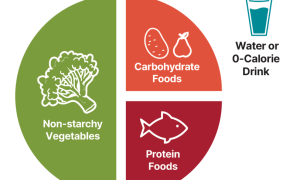
How to Make Potatoes Work in a Diabetes-Friendly Diet
Potatoes are a comfort food favorite, but they’re often misunderstood when it comes to managing blood sugar. In this post, we’ll share how to enjoy potatoes in a balanced way, what nutrients they offer, and how to fit them into a diabetes-friendly plate.
? When is the Best Time to Eat Potatoes?
While potatoes are at their peak from late summer to early winter, they’re available in grocery stores all year long. Their versatility and availability make them an easy, budget-friendly addition to any meal.
? What are the Benefits of Potatoes
Potatoes don’t just taste great—they also come packed with key nutrients. When eaten with the skin, a medium potato provides about 30% of your daily recommended intake of three essential nutrients: vitamin C, potassium, and vitamin B6
- What is Vitamin C? An antioxidant that can help reduce inflammation and prevent cell damage. Additionally, it can produce collagen which supports healthy gums and wound healing.
- What is Potassium? Lowers risk of high blood pressure and stroke. In fact, potatoes are a rich source of potassium, even more than bananas or oranges!
- What is Vitamin B6? Important for carbohydrate and protein breakdown in the body. This helps the body efficiently use food for energy.
? How to Incorporate Potatoes into Your Meals

Managing blood sugar doesn’t mean you have to miss out on potatoes. The key is mindful portioning and balanced meals. One helpful tool is the Diabetes Plate Method, which promotes balanced eating without counting every gram of carbohydrate.
How do I build a Diabetes Plate?
- ½ of your plate should be filled with non-starchy vegetables. Examples: spinach, broccoli, bell peppers, cauliflower
- ¼ of your plate should be lean protein.* Examples: grilled chicken, fish, tofu, lean beef
- ¼ of your plate should be carbohydrates. Examples: whole grains, fruits, legumes, potatoes
One small potato has roughly the same amount of carbohydrates as a small apple or ½ cup of brown rice or pasta. Potatoes can be baked, mashed, roasted, or air-fried. Keep portions reasonable and pair them with fiber-rich vegetables and lean protein for a well-rounded meal.
*For plant-based eaters, options like beans and lentils also provide protein. Just remember they contain carbohydrates too.
? Need Help?
Meal planning can feel overwhelming, but you’re not alone. The American Diabetes Association website offers a variety of diabetes-friendly recipes (some with potatoes!) to inspire your next meal. You can also call and talk to our registered dietitian (515-329-6800) to create a meal plan that’s right for you.
One tasty example is this ADA-approved Instant Pot Chicken Sausage and Zucchini Stuffed Potato Recipe!
SummaryPotatoes are a versatile and nutritious food that can be enjoyed as part of a diabetes-friendly meal plan when portioned mindfully. Rich in vitamin C, potassium, and vitamin B6 (especially when the skin is left on), potatoes offer several health benefits, including support for heart health, immune function, and energy metabolism. Using the Diabetes Plate Method, individuals can easily incorporate potatoes into balanced meals by pairing them with non-starchy vegetables and lean proteins. With the right preparation and serving size, potatoes can be both satisfying and supportive of healthy blood sugar levels.






